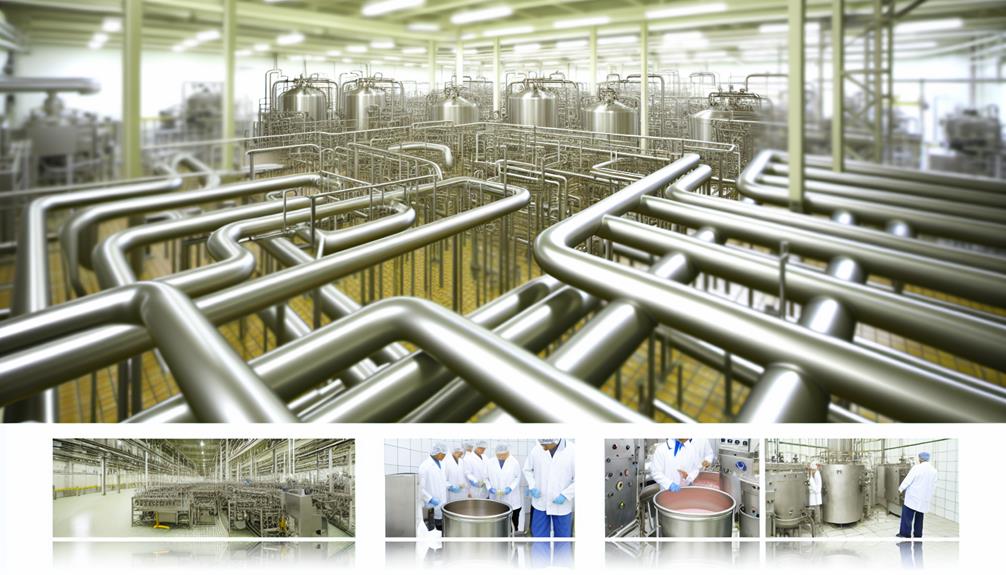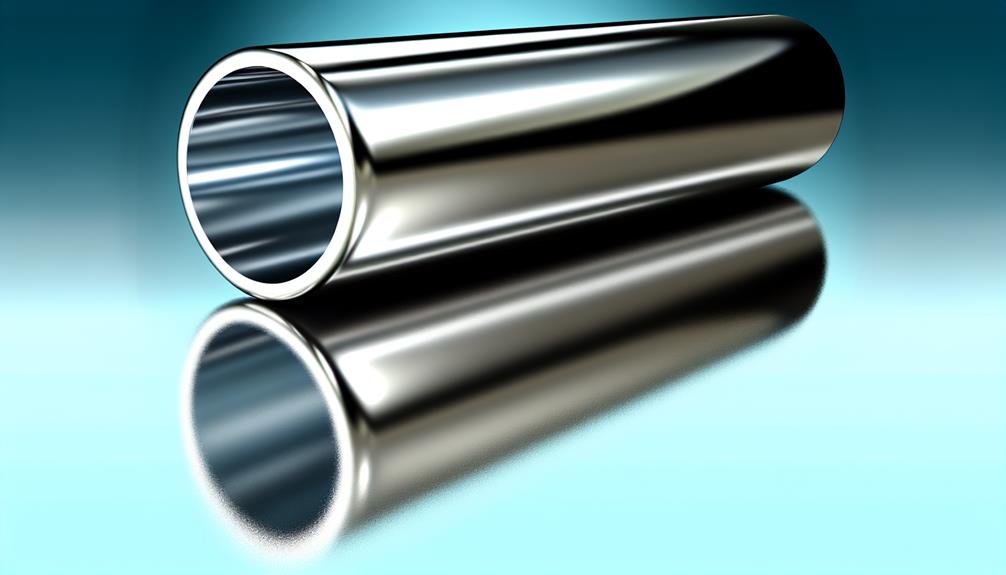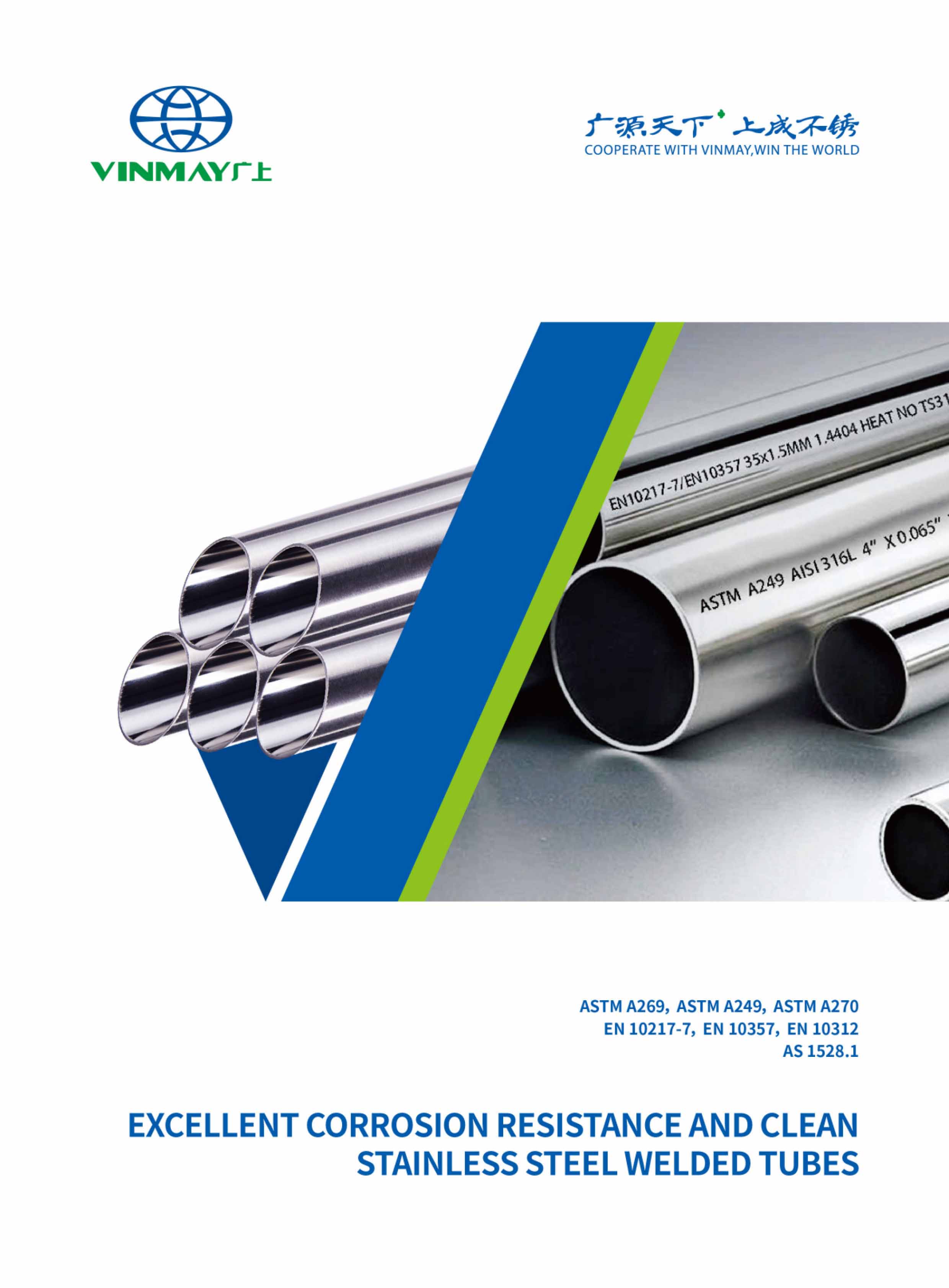Hygienic stainless steel tubes are designed for sterile liquid transport, featuring high-quality stainless steel construction with smooth surfaces for easy cleaning and sterilization. They come in grades like 304L and 316L, offering exceptional corrosion resistance and meeting sanitary standards. These tubes find applications in food, pharmaceutical, and biotech industries due to their durability and resistance to high temperatures. With precise customization options and compliance with strict hygienic standards, these tubes ensure optimal performance in critical environments. Learn more about the diverse applications, specifications, maintenance guidelines, and features of hygienic stainless steel tubes to make informed decisions for your specific needs.

Hygienics, in the context of stainless steel tube applications, encompass a specialized range of tube and fittings designed to maintain a sterile environment for the transport of liquids, crucially minimizing the risk of product contamination. These components are constructed using high-quality stainless steel, known for its corrosion resistance and durability, ensuring a hygienic transfer of fluids. The design of hygienic tubes includes features such as smooth, crevice-free surfaces that prevent the accumulation of bacteria and other contaminants, reducing the chances of microbial growth.
Moreover, hygienic tube fittings are engineered to facilitate easy cleaning and sterilization processes, essential for industries where maintaining a sanitary environment is paramount. The connections between tubes are designed to be secure and leak-proof, preventing any ingress of external substances that could compromise product integrity. In applications such as food and beverage, pharmaceuticals, and biotechnology, where product purity is non-negotiable, hygienic stainless steel tubes play a critical role in ensuring the safety and quality of the transported liquids.
Manufactured from cold-rolled stainless steel material and longitudinally welded, hygienic tubes are integral components designed to maintain sterile environments for the transportation of liquids. These tubes play a crucial role in industries where cleanliness and sanitation are paramount, such as pharmaceuticals, food processing, and biotechnology.
The hygienic tubes undergo a meticulous production process, ensuring that they meet stringent quality standards. Depending on the specific requirements, the tubes may or may not undergo heat treatment, with options for annealing or pickling and passivation.
Products that are not annealed undergo pickling and passivation to remove any weld heat-tinted layers and to restore the protective surface layer. On the other hand, annealed products can be further processed through bright annealing in a controlled atmosphere or pickling and passivation treatments. This attention to detail in the manufacturing process ensures that hygienic tubes operate effectively in preserving the purity of transported liquids.

The hygienic stainless steel tube grades commonly used are 304L and 316L. These grades offer superior corrosion resistance and are ideal for applications requiring high levels of cleanliness and sanitation.
Both 304L and 316L stainless steel tubes are well-suited for industries such as food and beverage, pharmaceuticals, and biotechnology due to their hygienic properties.
The 'L' designation in 304L stainless steel denotes its low carbon content, which enhances its corrosion resistance, a crucial attribute for applications demanding optimal cleanliness and safety. Key features of 304L include:
Similarly, 316L stainless steel boasts the 'L' grade designation, indicating its low-carbon variant, offering improved corrosion resistance and weldability. This grade is preferred in industries where stringent hygiene standards are non-negotiable. Key attributes of 316L include:
Both 304L and 316L stainless steel tube grades offer unparalleled hygiene and durability, making them indispensable in industries where cleanliness is paramount. Whether it's maintaining optimal cleanliness standards or ensuring product integrity, these grades stand as pillars of reliability and performance in hygienic applications.

The applications for sanitary stainless steel tubing, particularly in industries such as food processing, beverage production, biotechnology, and pharmaceuticals, are extensive and critical for maintaining hygienic standards.
Understanding the specific applications for 304L and 316L stainless steel sanitary tubing is essential, as these materials are commonly used in hygienic environments where cleanliness and corrosion resistance are paramount.
A detailed comparison of the properties and suitability of 304L and 316L grades in hygienic settings will provide valuable insights for industry professionals seeking to optimize their processes.
304L Stainless Steel Tubing finds critical applications in industries requiring high levels of hygiene and corrosion resistance, notably in sanitary environments. This type of tubing is commonly used in:
304L Stainless Steel Tubing's durability, ease of cleaning, and resistance to high temperatures make it a preferred choice in these industries for maintaining sanitary conditions.
Commonly utilized in industries requiring impeccable hygiene standards, 316L Stainless Steel Tubing stands out for its exceptional corrosion resistance, particularly in applications demanding stringent sanitary conditions.
This material, containing molybdenum, is highly recommended for use in the biotech and pharmaceutical industries due to its superior corrosion resistance properties. 316L stainless steel tubing is ideal for applications where cleanliness is paramount, such as food processing, dairy, and beverage production.
Its ability to withstand harsh cleaning processes, high temperatures, and corrosive environments makes it a top choice for maintaining sanitary conditions. The molybdenum content enhances its overall durability and longevity, ensuring reliable performance in critical hygienic settings.
In applications requiring stringent hygiene standards, a thorough comparison between the 304L and 316L grades of stainless steel tubing is imperative to determine the most suitable option for maintaining sanitary conditions.
Corrosion Resistance:
Strength:
Cost:
Explore a detailed comparison between 304L and 316L grades of stainless steel tubing to make informed decisions for your hygienic applications
The specifications of hygienic stainless steel tubes encompass a diverse array of attributes. These tubes are typically constructed using welded methods to ensure structural integrity and cleanliness. Manufacturers offer a variety of external finishes to meet specific hygienic requirements and aesthetic preferences.
These tubes include a wide size range to suit various applications.
Hygienic stainless steel tubes are available in a diverse range of sizes, catering to the specific needs of various industrial applications. These tubes are meticulously manufactured to meet stringent standards, ensuring optimal performance in demanding environments.
1. Diameter:
2. Wall Thickness:
3. Length:
These size variations in hygienic stainless steel tubes enable precise customization to meet the specific requirements of diverse industries, including food and beverage processing, pharmaceuticals, biotechnology, chemical processing, and more. Whether for precision instrument tubing or robust process piping, hygienic stainless steel tubes offer reliability, durability, and performance across a wide range of sizes and applications.
Crafted with precision and expertise, the welded construction of hygienic stainless steel tubes features an internally rolled bead that flattens crevices, ensuring seamless flow and minimizing contamination risks.
This design eliminates bug traps and interruptions to the flow, crucial for applications requiring high hygiene standards. By facilitating easy cleaning, the flattened bead enhances the tube's sanitation properties, making it suitable for industries where cleanliness is paramount.
The welded construction provides structural integrity and durability, essential for withstanding demanding environments. Additionally, the absence of crevices reduces the likelihood of bacterial growth, maintaining the purity of the transported substances.
Explore our guide on sanitary stainless steel welding to learn more about the welding techniques used in the fabrication of hygienic stainless steel tubes.
In consideration of the meticulous welded construction ensuring structural integrity and enhanced hygiene standards, the hygienic stainless steel tubes offer a variety of external finishes to meet specific industry requirements.
The following external finishes are available for hygienic stainless steel tubes:
Each finish serves distinct purposes, from providing a smooth, clean surface (Descaled) to a highly reflective and aesthetically pleasing appearance (Bright Annealed).
The choice of finish is crucial in various industries where hygiene, durability, and visual appeal are paramount. These finishes not only enhance the overall look of the tubes but also contribute to their corrosion resistance and ease of cleaning, making them ideal for critical applications.
Maintaining strict adherence to hygienic standards and compliance is essential in the stainless steel tube industry to ensure product purity and safety. Hygienic standards dictate the design, materials, and manufacturing processes of stainless steel tubes to prevent contamination and ensure suitability for sensitive applications like food, pharmaceuticals, and biotechnology. Compliance with regulations such as the Food and Drug Administration (FDA), European Hygienic Engineering and Design Group (EHEDG), and 3-A Sanitary Standards is crucial in meeting industry requirements.
Hygienic stainless steel tubes must meet specific criteria regarding surface finish, corrosion resistance, and cleanability. The materials used must be non-toxic, corrosion-resistant, and easy to sanitize to prevent bacterial growth and maintain product integrity. Additionally, proper installation and maintenance procedures are paramount in upholding hygienic standards throughout the tube's lifecycle.
Certifications and audits by regulatory bodies ensure that manufacturers adhere to hygienic standards and compliance protocols, providing customers with assurance of product quality and safety. Continuous monitoring and improvement of processes are fundamental in maintaining hygienic integrity within the stainless steel tube industry.

To fully understand the functionality and performance of hygienic stainless steel tubes, it is imperative to examine the key features that distinguish them within the industry. When it comes to hygienic stainless steel tubes, three main features set them apart:
Effective maintenance and cleaning of hygienic stainless steel tubes is crucial for ensuring optimal performance and hygiene standards in various industrial applications. Regular cleaning should be performed using mild detergents or specialized stainless steel cleaners to remove any dirt, grease, or contaminants that may accumulate on the surface. It is important to avoid using abrasive materials or harsh chemicals that could damage the stainless steel surface.
For routine maintenance, inspect the tubes regularly for any signs of corrosion, pitting, or surface damage. Address any issues promptly to prevent further deterioration. Additionally, ensuring proper drainage and ventilation around the tubes can help prevent the buildup of moisture and potential microbial growth.
When cleaning hygienic stainless steel tubes, consider the specific requirements of the application and consult with manufacturers for recommended cleaning procedures. Following the correct cleaning and maintenance guidelines will not only extend the lifespan of the tubes but also maintain the required hygiene standards for your industrial processes.
Explore our blog post on Common Issues and Solutions for Sanitary Stainless Steel Tube Systems to learn more about troubleshooting and maintaining stainless steel tube systems in hygienic environments.
Yes, hygienic stainless steel tubes are commonly used in food processing applications due to their corrosion resistance, durability, and ease of cleaning. They meet strict hygienic standards, ensuring the safety of food products.
Hygienic stainless steel tubes offer superior corrosion resistance, durability, and hygienic properties compared to other materials. They are easy to clean, and maintain, and offer a smooth surface that prevents bacterial growth, making them ideal for food processing applications.
Hygienic stainless steel tubes must adhere to stringent regulations and standards to ensure safety and quality. Compliance with specifications such as ASTM A270 for surface finish and material composition is critical in industries where hygiene is paramount.
The surface finish of stainless steel tubes impacts their performance in sanitary applications by influencing cleanability, corrosion resistance, and bacterial adhesion. Smooth finishes like mirror polish are preferred for hygiene-sensitive environments to minimize contamination risks.
When maintaining hygienic stainless steel tubes, it is recommended to use cleaning agents that are non-abrasive and compatible with stainless steel to avoid damage. Methods such as passivation and electropolishing can also enhance the stainless steel's cleanliness and corrosion resistance.
Blog Series:
At Vinmay, we offer a wide range of stainless steel tubing tailored to meet various sanitary applications. Whether you're outfitting a beverage processing facility or a pharmaceutical plant, we have the perfect tubing solution for your needs.
In conclusion, hygienic stainless steel tubes are essential components in various industries where cleanliness and sanitation are paramount. With their high-quality materials and precise manufacturing, these tubes ensure the safe transfer of liquids and gases without contamination.
By adhering to strict hygienic standards and regular maintenance, these tubes can provide reliable performance for a wide range of applications. Choose hygienic stainless steel tubes for your next project to guarantee efficiency and cleanliness.
For assistance in selecting the right hygienic stainless steel tube for your specific needs, contact us at Vinmay. We are dedicated to providing expert guidance and top-quality products to ensure the success of your projects.



